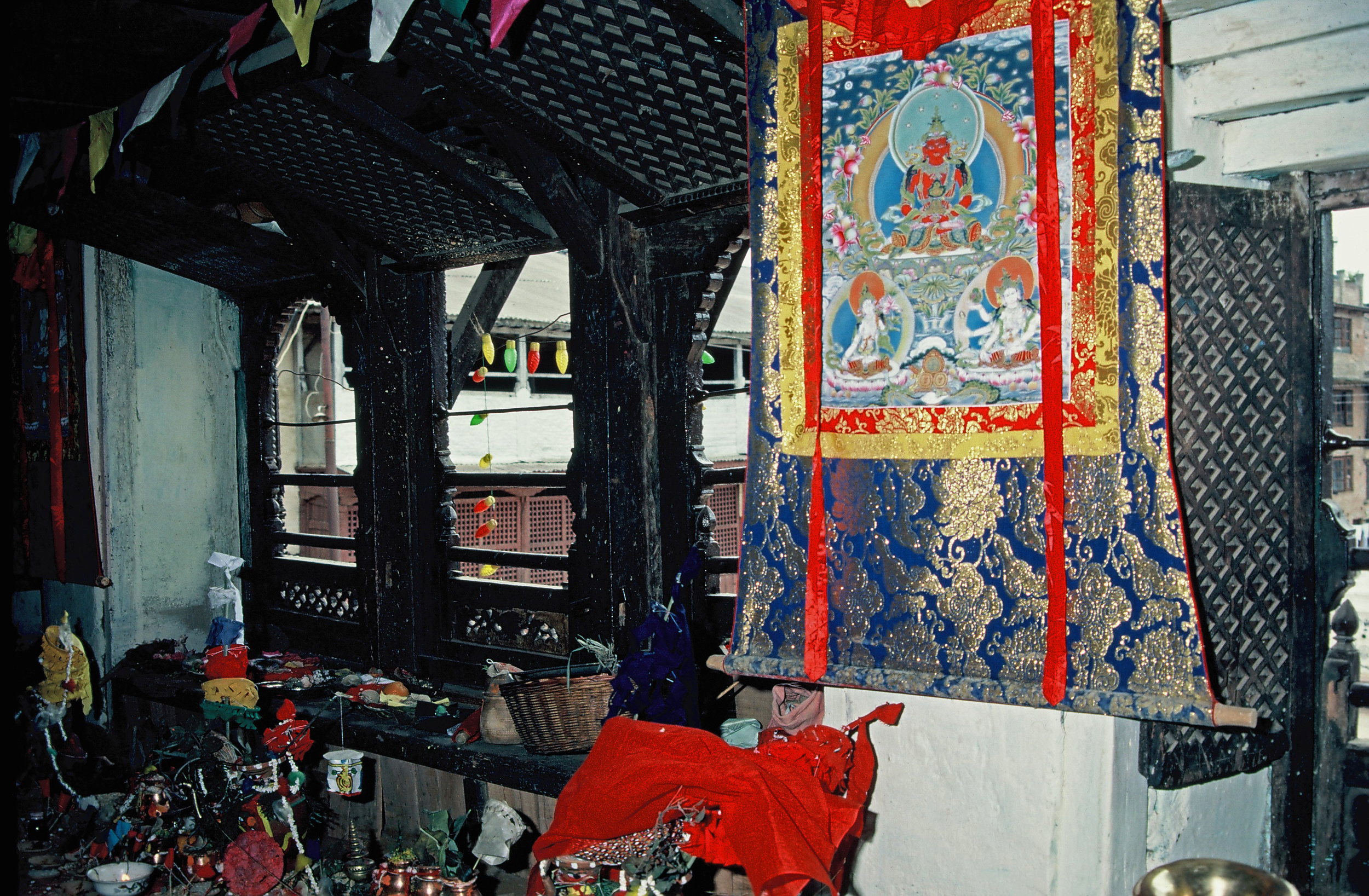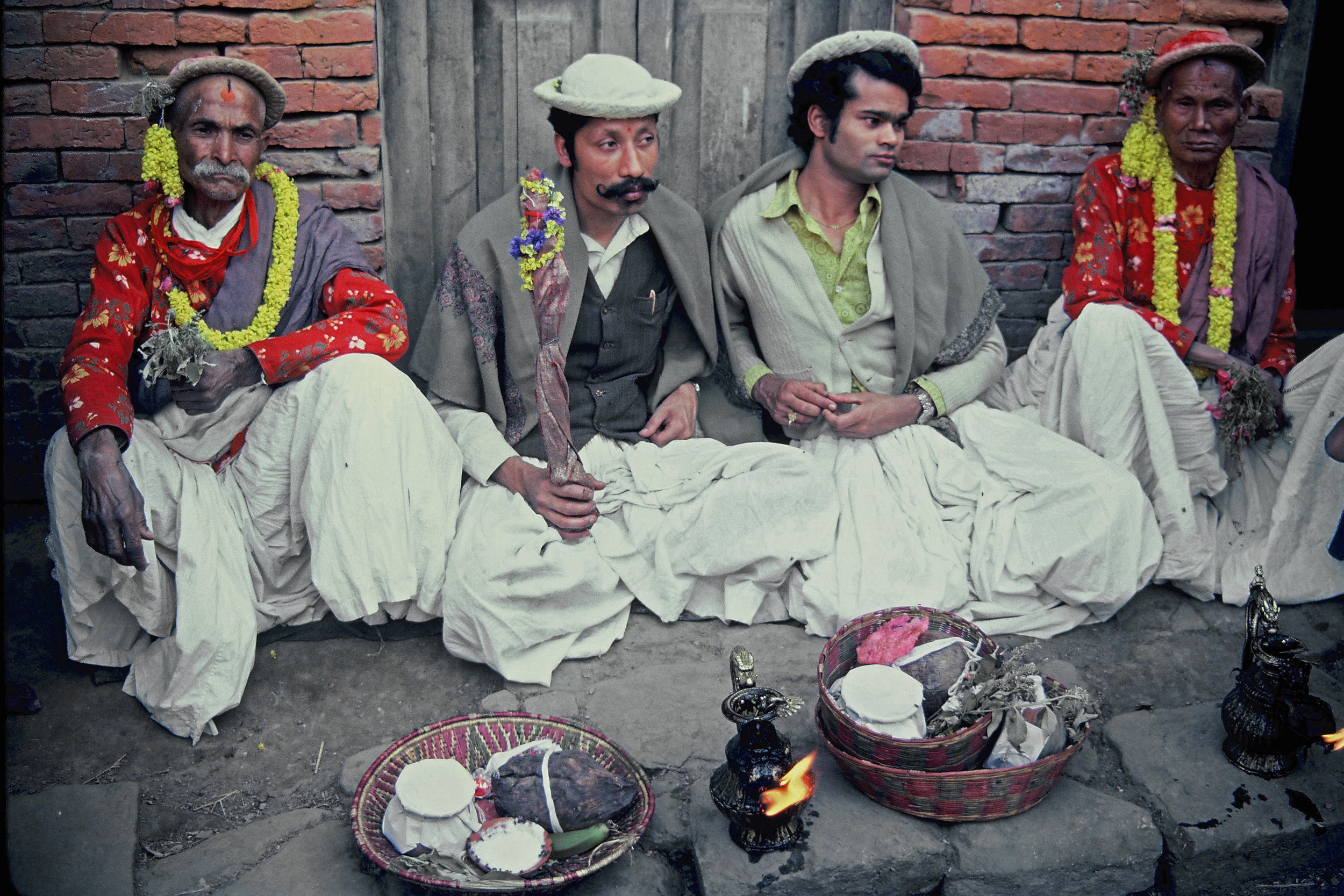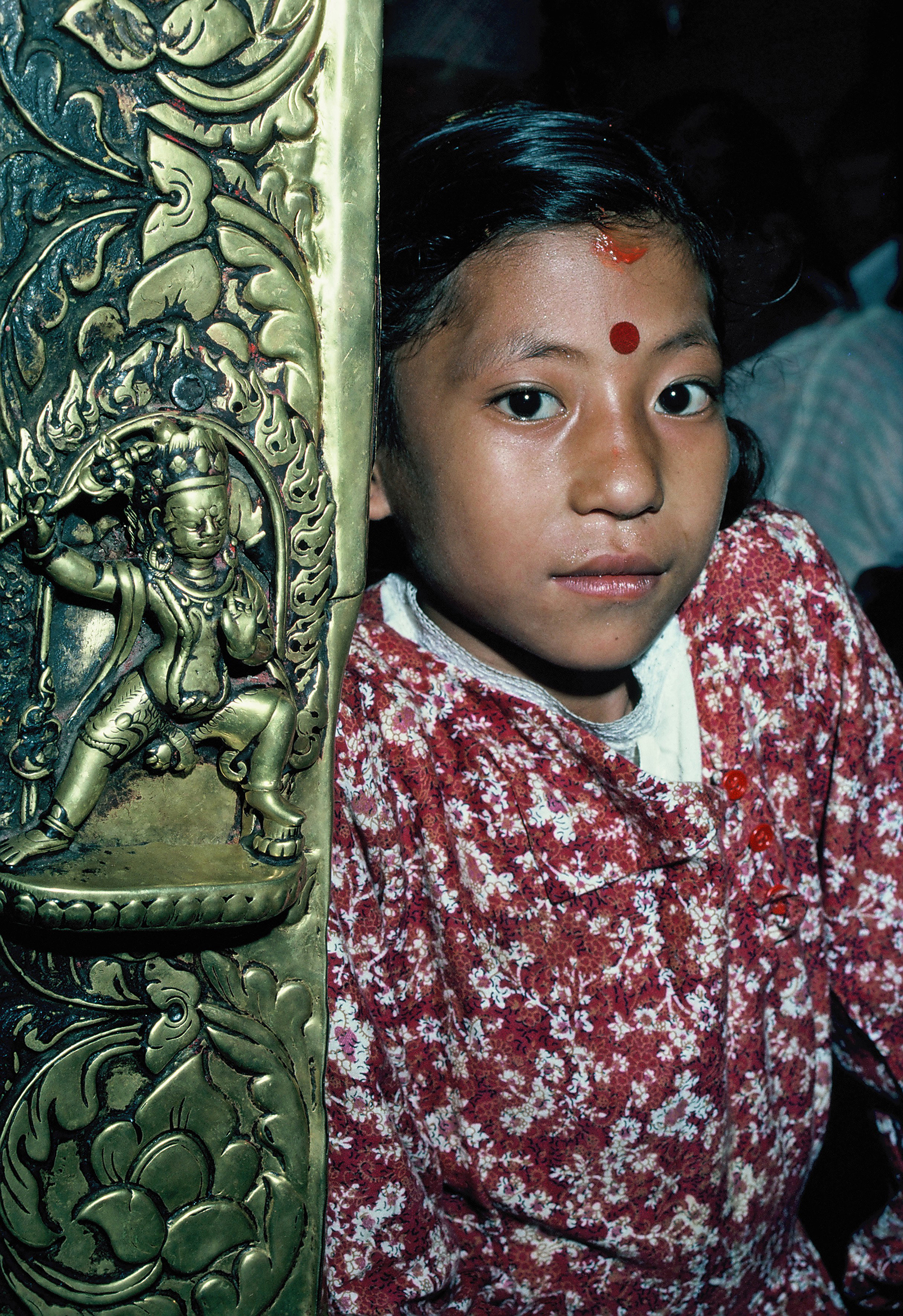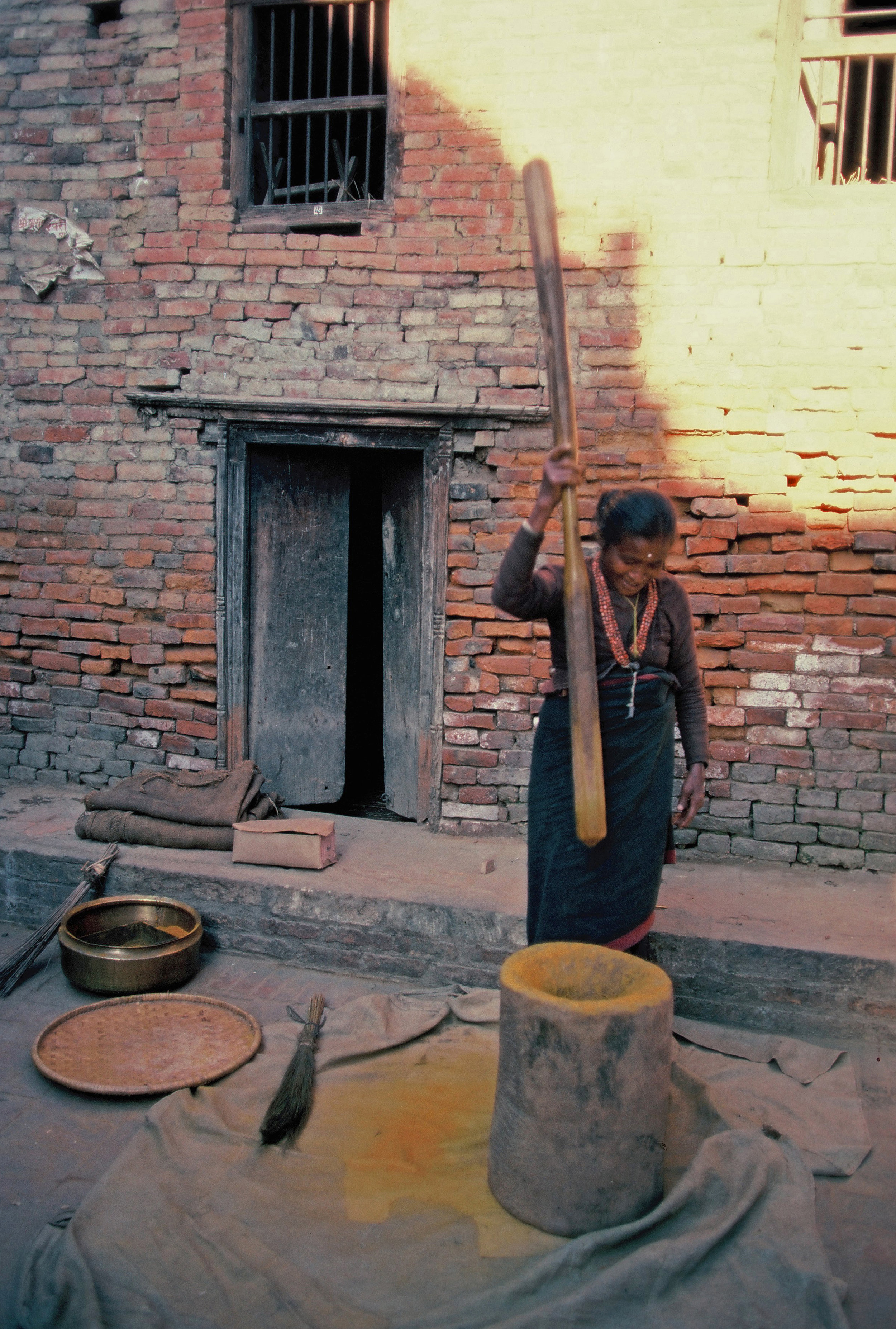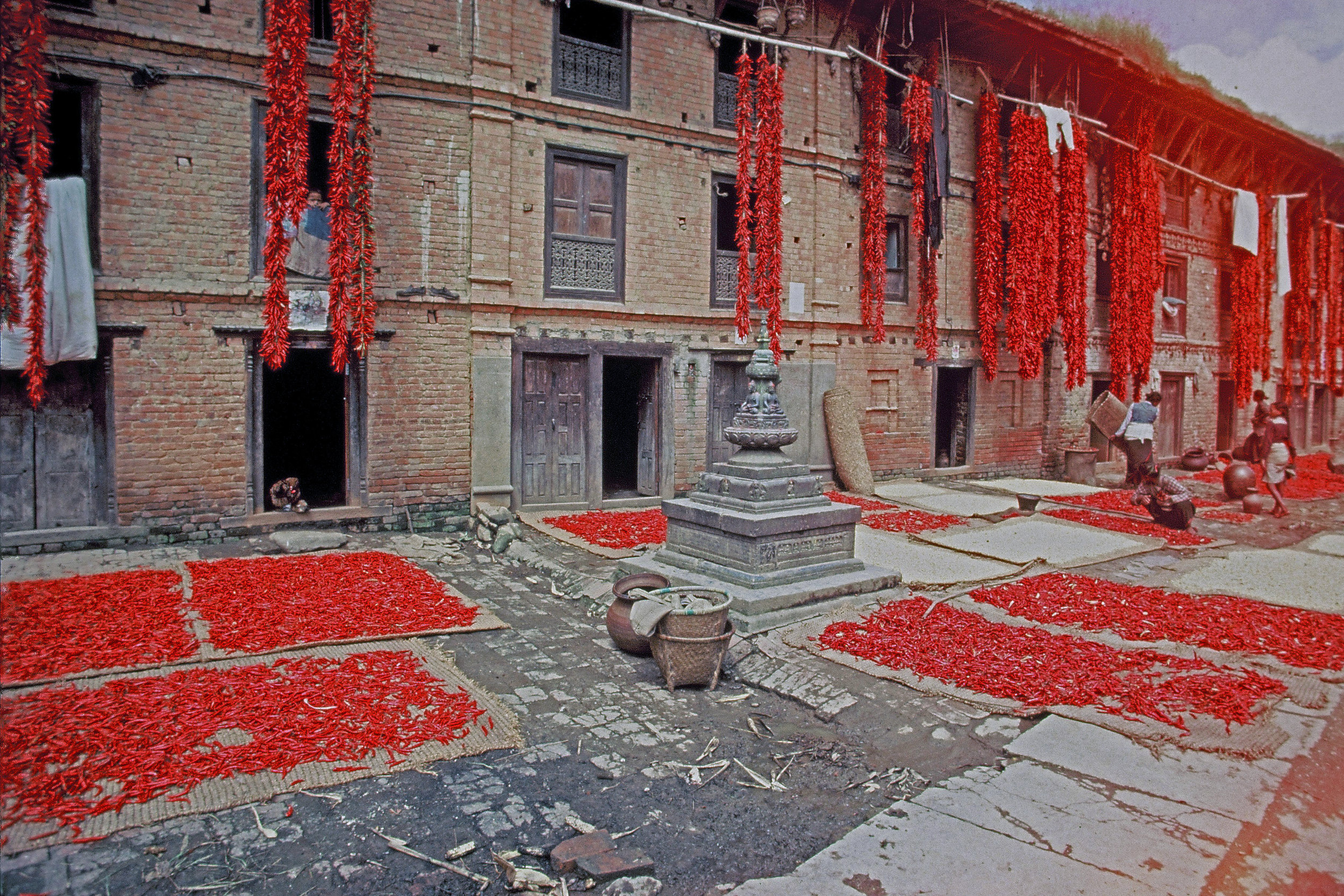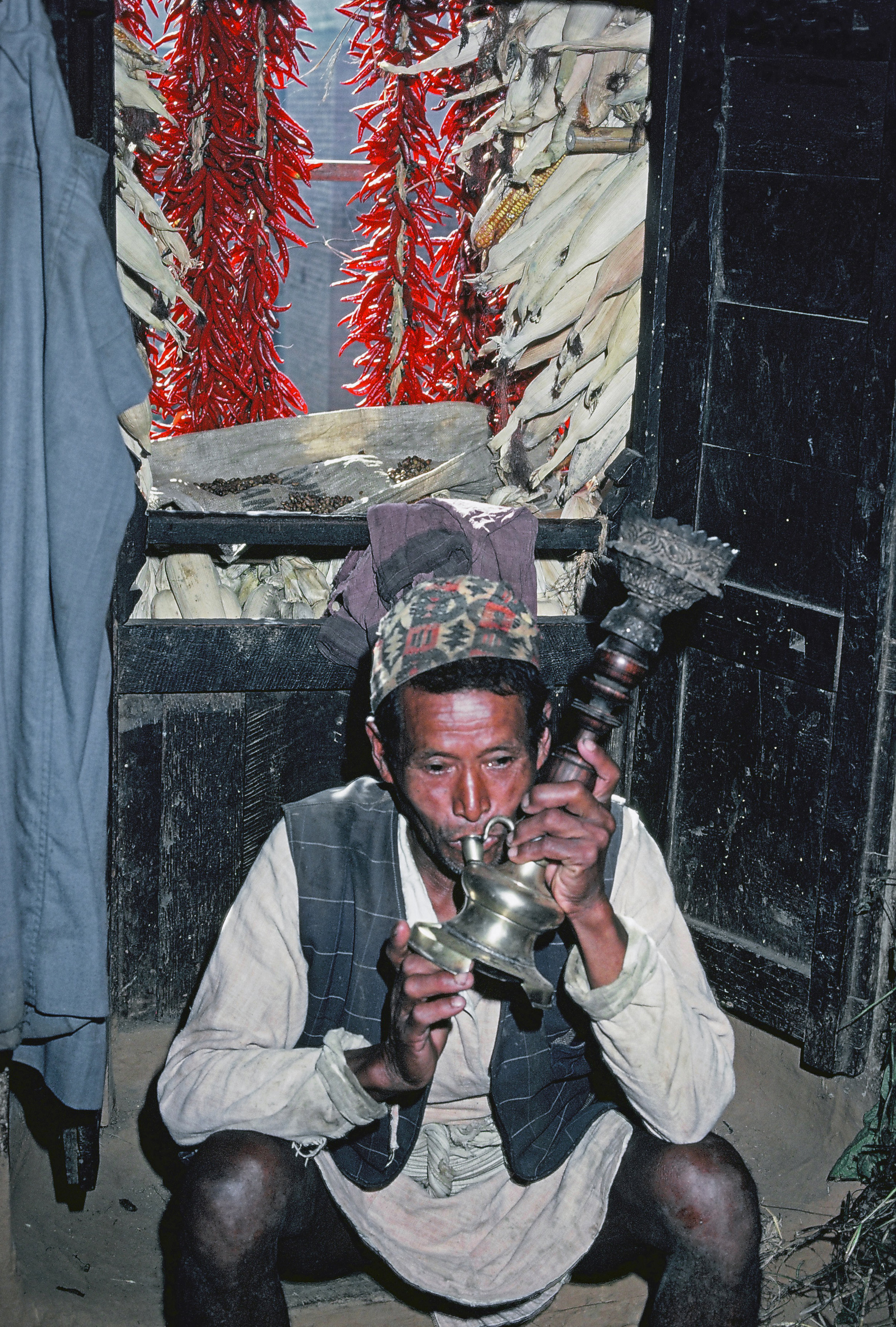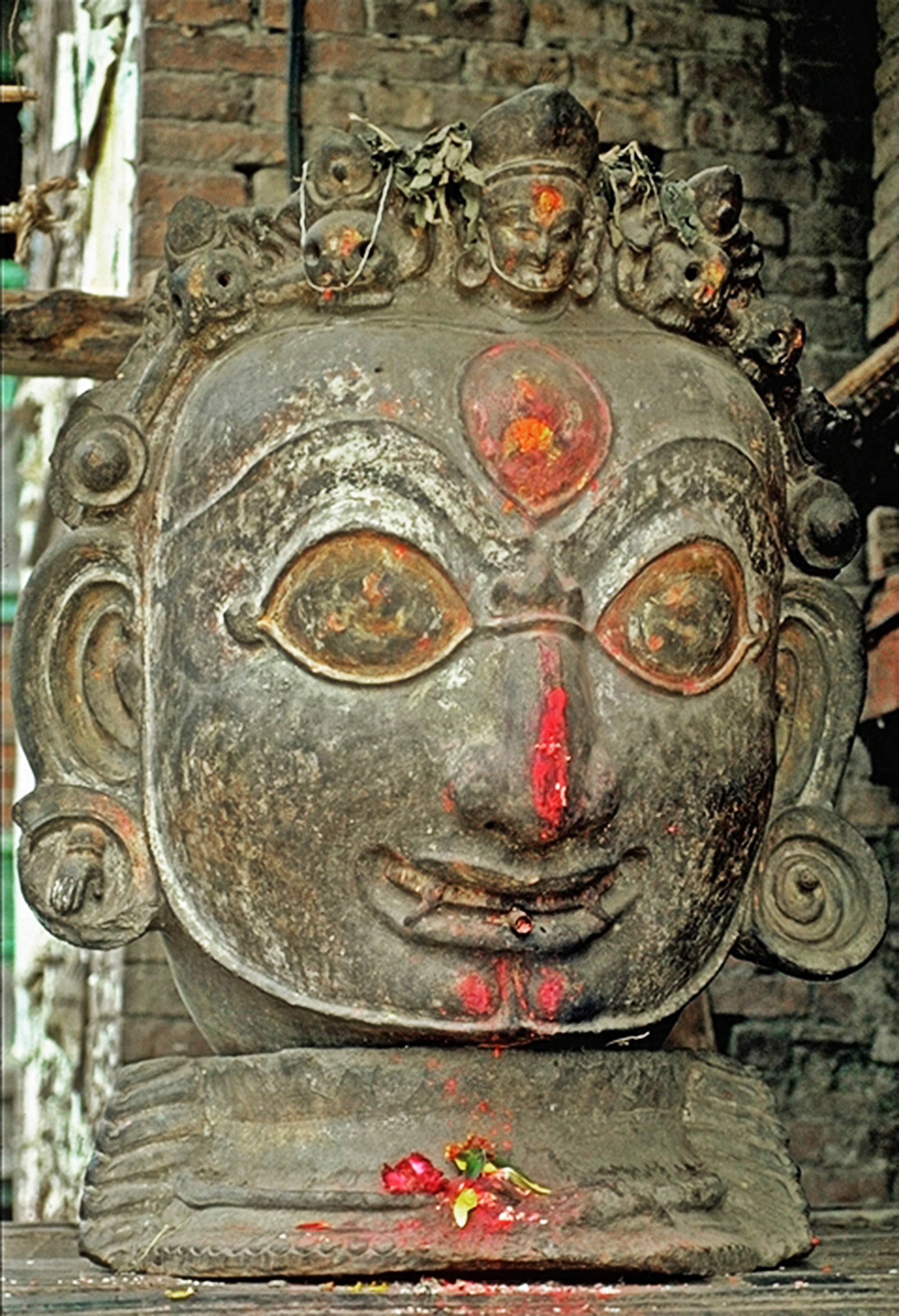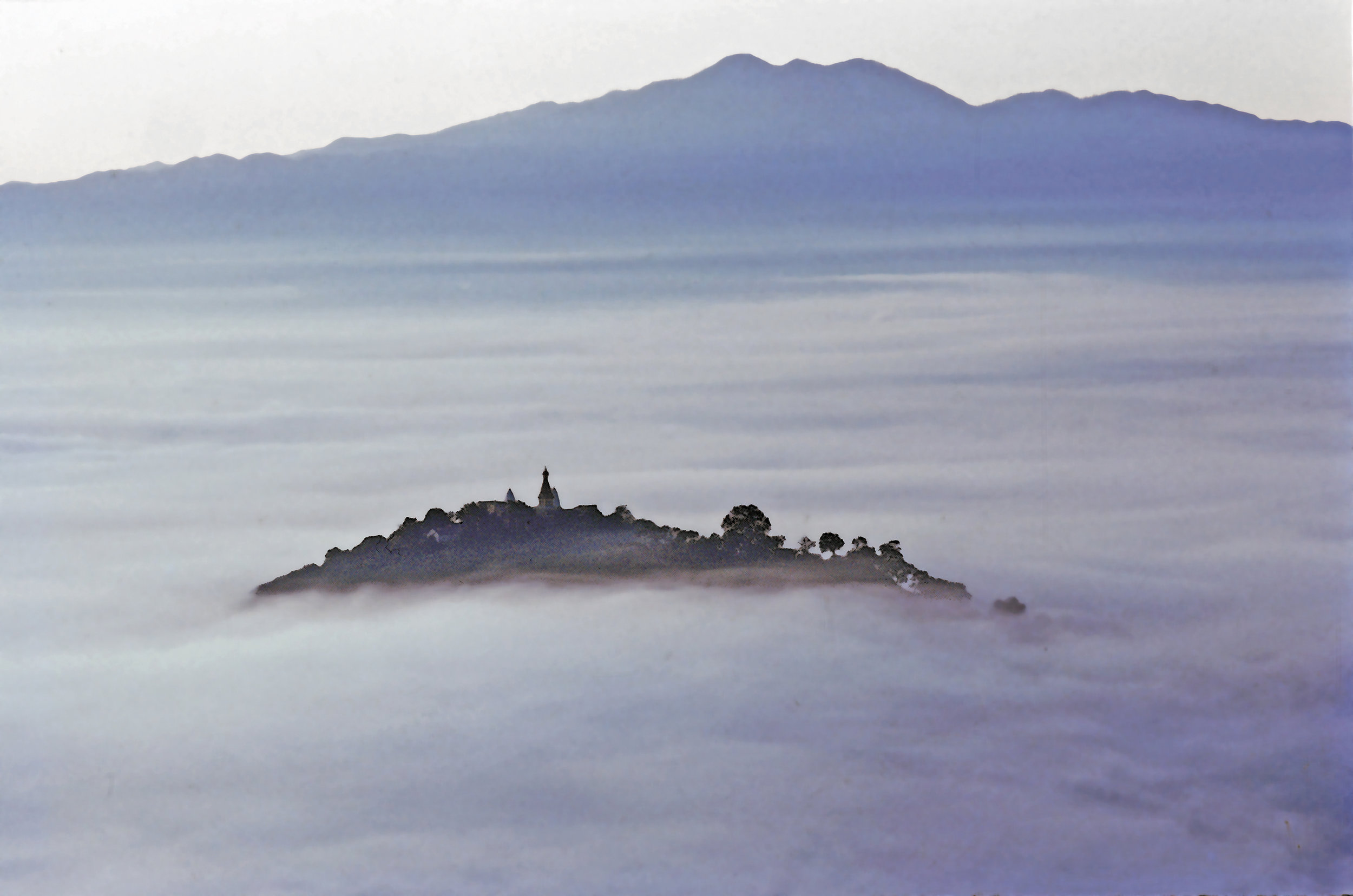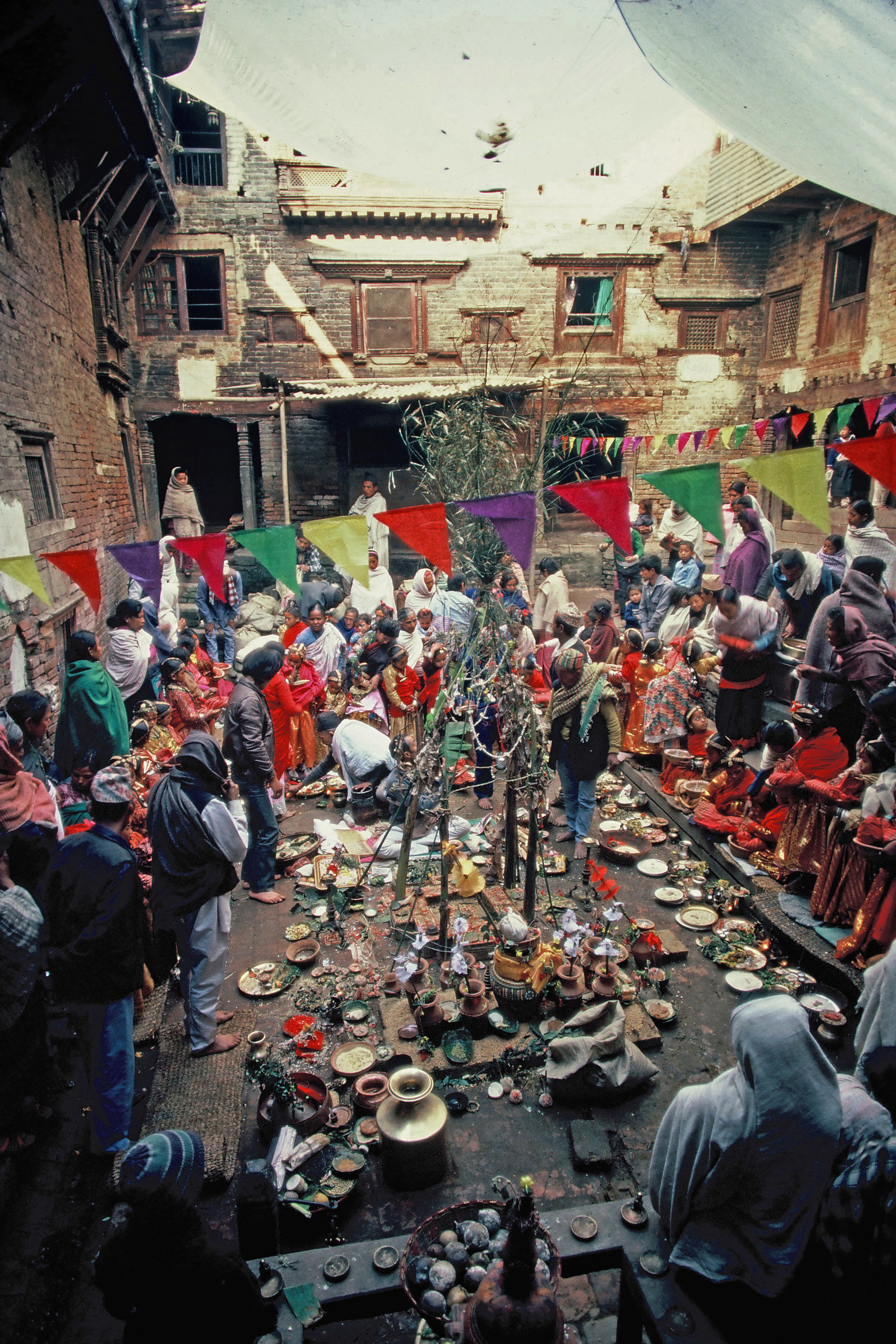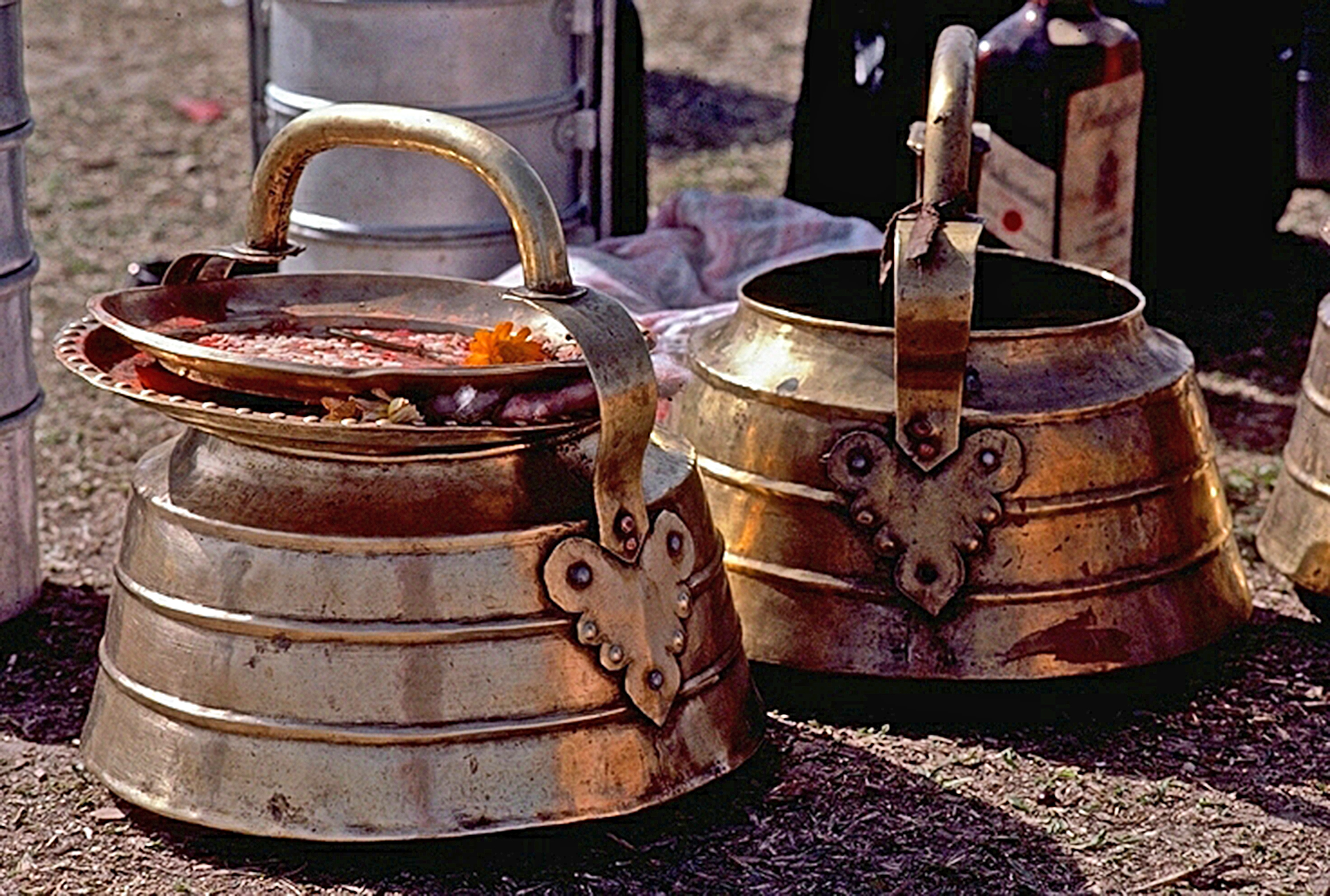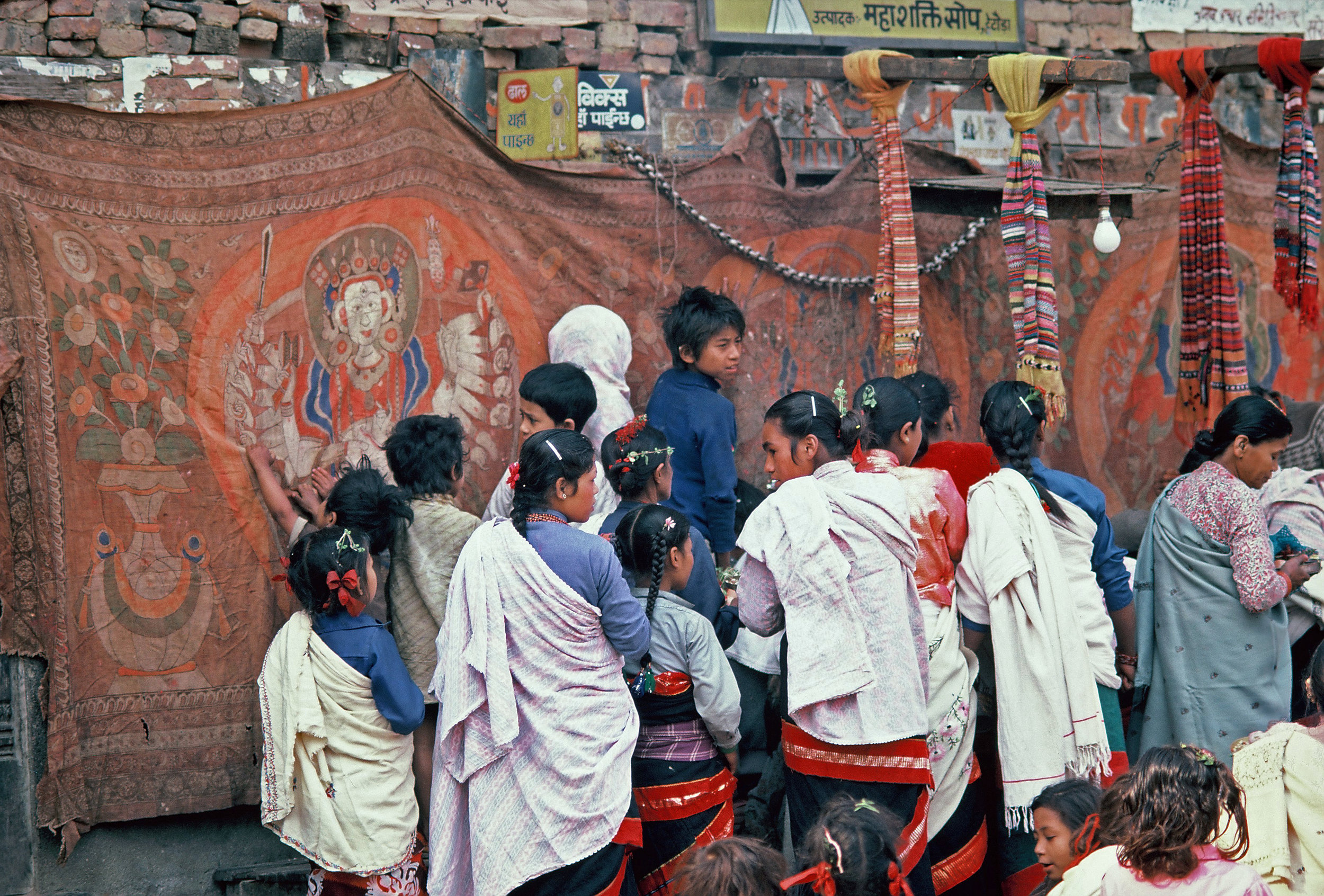Kathmandu Valley, the rich green treasure of Nepal, is the home of the Newar people, who for two millennia have been at the crossroads of trade and teaching between India and Tibet. Blessed with a supportive setting, the kings and wealthy Newars were especially motivated to express their devotion with generous offerings. The rulers had access to the finest artists, artisans and architects. The result was an extraordinary variety of devotional outpourings in the forms of palaces, temples, bahas, chaityas, shrines, rest houses, gahiri-dhara (deep fountains), water tanks, sacred trees and ponds established to exhibit, protect and extend their prosperous life.
Sounds of hammering and beating, chiseling and turning, carving and chasing, fill the lanes and chowks. These are the centers of creative manufacture in both cast and hammered metal. Tamrakar workers hammer copper and brass sheet metals to make water vessels, cauldrons and a variety of utensils. Kansakar metal workers pour molten bell metal to form a slab which they beat into cymbals, bowls, and plates. Sakya and Vajracharya smiths make gold and silver ornaments. Besides the metal work for private households, this tradition of rare artistic power speaks out of the centuries from elaborately ornamented temple surfaces, the ritual jewelry of the Kumari, and the seemingly uncountable images of deities in temples and shrines throughout the valley and beyond. Besides the images for the shrines and temples, there is a vast number of designs for household use as pitchers for water and alcohol, trays for offerings, bowls and plates, and various pots for oil. The surfaces are often defined in a series of complex curves and angles within each of the structural areas of the form. Then again within these delineations of surface, further complexity is added by series of ornamental lotus petals and other floral designs, creating an extremely elaborate surface based on layer upon layer of components and elements, textures and details.


